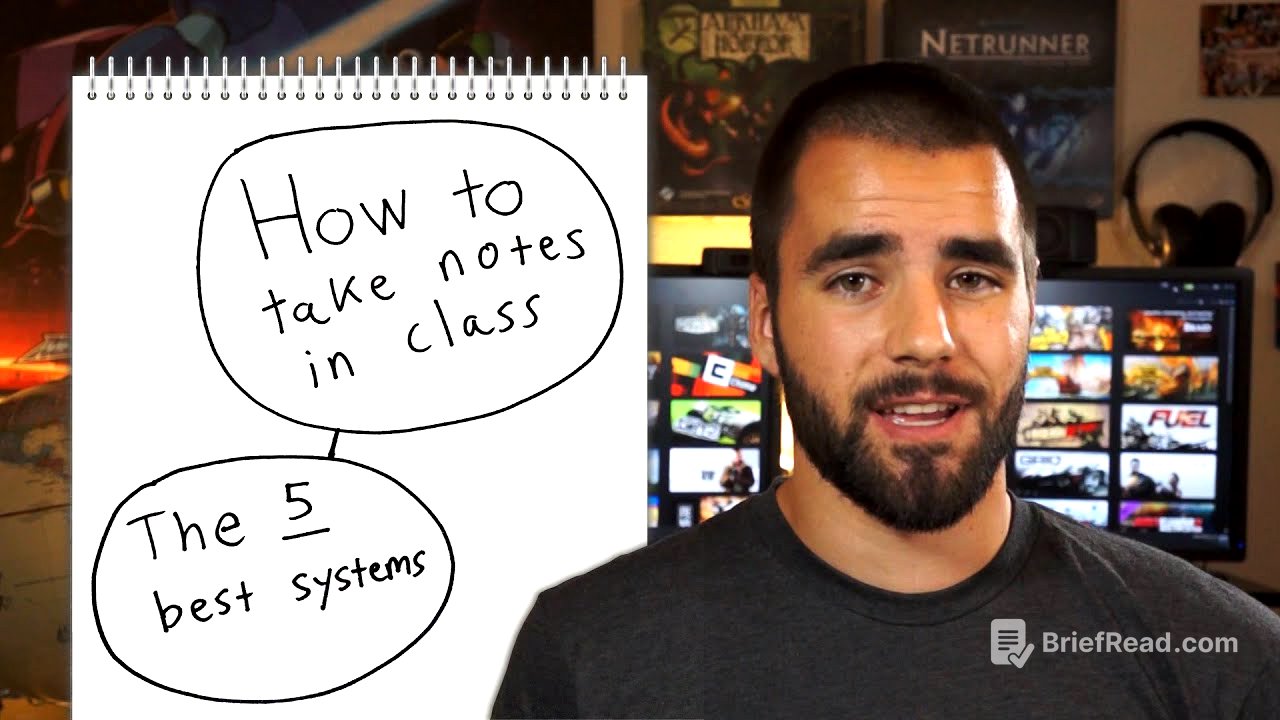TLDR;
This video presents five note-taking systems: the outline method, the Cornell method, mind mapping, the flow method, and writing on slides. Each method is explained with its unique approach to capturing and organizing information during lectures. The video uses analogies to Street Fighter characters to represent each method's style and strengths.
- Outline Method: Hierarchical and straightforward, best used on a computer.
- Cornell Method: Divides notes into cue, note-taking, and summary sections for review.
- Mind Map Method: Uses a central topic to branch out into subtopics, useful for brainstorming.
- Flow Method: Focuses on learning during the lecture, creating a personalized representation of the subject.
- Write on Slides Method: Involves directly annotating lecture slides, providing a timeline view of the lecture.
Introduction to Note-Taking Systems [0:00]
The video introduces five note-taking systems that are considered effective: the outline method, the Cornell method, the mind map method, the flow method, and the write on the slides method. Each note-taking system is represented by a Street Fighter character.
Outline Method [0:32]
The outline method, represented by Ryu, is a straightforward system based on hierarchy and bullet points. It involves creating top-level bullet points for main lecture points and lower-level bullet points for details. Using a computer for this method is recommended for easy formatting and organization.
Cornell Method [1:34]
The Cornell method, represented by Chun-Li, divides paper into three sections: a cue column, a note-taking column, and a summary section. During class, notes are taken in the note-taking column. After class, questions or cues are written in the cue column, and a summary of the lecture is written in the summary section to facilitate review.
Mind Map Method [2:27]
The mind map method, represented by Dhalsim, involves creating a visual map of topics and subtopics. It starts with a central topic in a circle, branching out into subtopics to organize information. The method is useful for brainstorming and creating comprehensive lists.
Flow Method [3:24]
The flow method, represented by Blanka, focuses on learning during the lecture rather than transcribing it. It involves creating an original document that represents the user's mental image of the subject, with the goal of accelerating learning. Notes can be added, and details can be included to create a personalized representation.
Write on Slides Method [4:29]
The write on slides method, represented by Zangief, involves writing directly on lecture slides if the professor provides them before class. This method provides a timeline view of the lecture and reduces the amount of writing required. It allows users to look back and see what was discussed on each slide.
